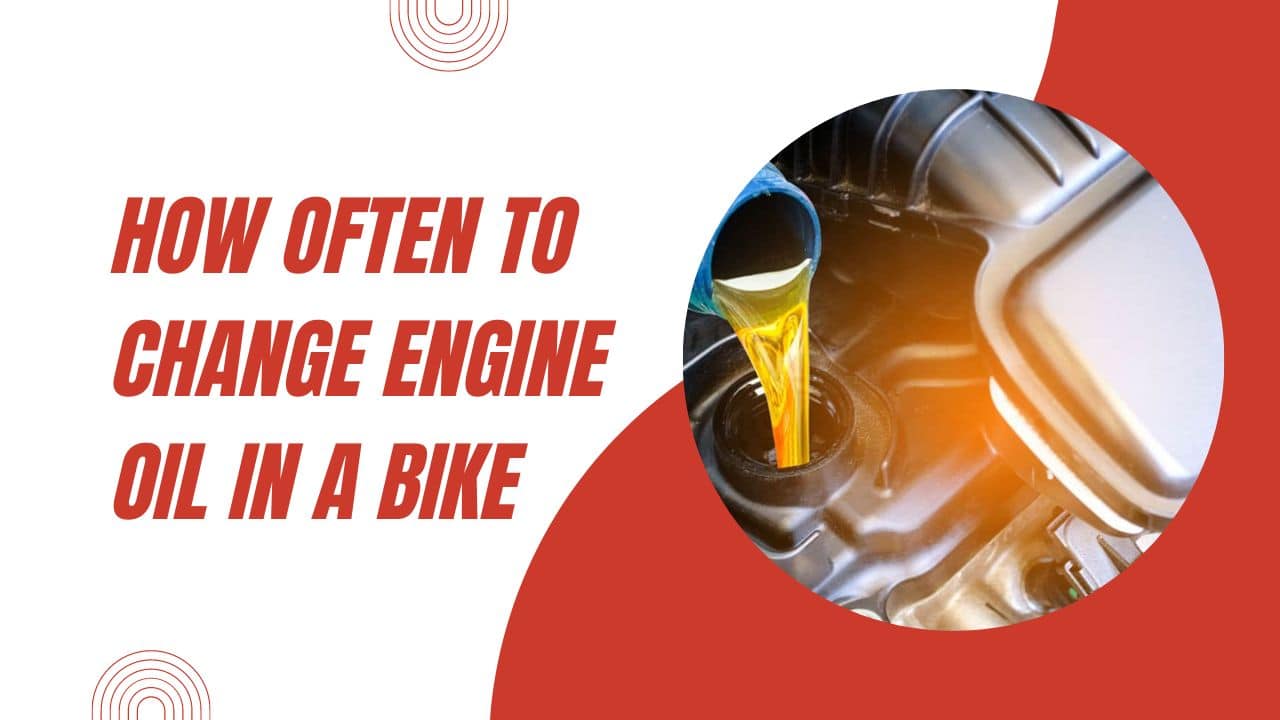
As a general rule and as a responsible biker owner, change your bike’s engine oil regularly. Experts agree that bike oil changes should be done every 2,000 kilometers or at least every six months.
To get the best service and performance from your bike, maintain it regularly. Maintenance will elongate the engine’s life, save cash you would use on repairs and spare parts, and prevent the inconveniences of a slow bike or downtime.
Changing the oil on your bike regularly is a good way to keep it in good shape and make sure it stays reliable, stable, and performs at its best. If you don’t change the oil in your motorcycle’s engine, it won’t be able to do all of its jobs as well.
How Often Does Your Bike Need an Oil Change?
One of the determinants of how often you should change a bike’s engine oil is the lubricant your motorcycle uses. All mineral, synthetic, and semi-synthetic oils have varied fluid change intervals.
The frequency and kilometers you ride the motorbike will also factor in when to have an oil change. In addition to these influencers, always consult the owner’s manual for professionally recommended maintenance intervals.
When to replace different bike engine oils;
Benefits of a Regular Bike Engine Oil Change
A regular oil change is one of the most critical bike maintenance practices you can observe. Essential details like oil change intervals are listed in the owner’s manual. An oil change is also a hardy inspection opportunity. You not only get your bike’s fluids changed, but in addition, you get a free multipoint inspection as part of the routine.
Some benefits you drive from a regular fluid change include;
Longer engine life
Routine fluid changes are an investment that will ensure your bike serves you for a long time. An oil change lubricates and protects your bike’s engine from wear and breakdown. If you follow the maintenance as per the owner’s manual, you will have a longer engine life.
Enhances engine performance
Over time, oil breaks down due to heat exposure. The fluid then loses the ability to oil the engine and reduces viscosity. If the lubricant gets dirty, the sludge builds up and might block the flow parts of the machine. Make sure you change the oil on your bike regularly to avoid problems that could slow it down.
It gets better oil mileage.
If a motorcycle does not get a regular oil change, there will be an increase in friction caused by dirt and grit build-up inside the engine. Friction wears out engine parts and reduces the bike’s performance. Increased friction in the moving parts increases oil consumption but with low performance.
Functions of Motorcycle Engine Oil
Bike oil serves several functions in the engine, hence the need to ensure you use only fresh and good quality oil. Oil, like all other substances, changes with time. Oil additives do break down, and the quality of oil deteriorates. Use the correct type of lubricant and change it regularly to keep your vehicle running efficiently.
Bike engine oil serves these functions below;
Different Types of Motorcycle Oil
Though all engine oil serves the same purpose in a motorbike, there are three types of motorcycle engine oil to choose from depending on the owner’s manual recommendation. The lubricants are synthetic, semi-synthetic, and mineral (conventional) oil.
Synthetic Oils
Synthetic oils are made from chemically revamped petrochemicals and do not use crude oil. Through a complicated process, the right chemical mix is made for the best engine oiling while the impurities are filtered out of the mineral oil.
Synthetic oils are much more expensive than conventional oils. The oils do not break down as fast as mineral oil and offer excellent protection against wear, fuel deposits, corrosion, and oxidation.
Mineral Oil
Mineral oil, also known as conventional oil, is formulated from petroleum products made from refined crude oil. It is a fossil fuel made from dead and decomposed underground organisms.
Though not as effective as synthetic oil, it is cheaper. Conventional oil, which comes from crude oil, has impurities that make it break down faster and need oil changes more often than synthetic oils.
Semi-synthetic Oil
Semi-synthetic oil is a hybrid of conventional and synthetic oils. It contains about five to thirty percent of synthetic fluid. As a hybrid, semi-synthetic oil derives the benefits of synthetic oil protection, longevity, and mineral oil affordability.
Semi-synthetic oil has low viscosity and friction, resists oil breakdown, provides better protection at higher temperatures and heavy loads, and is not subject to evaporation compared to mineral oils.
Conclusion
Routine fluid changes ensure your bike runs smoothly, is economical fuel-wise, and gets maximum oil mileage. Always consult the user’s manual and adhere to all the instructions. The manual guides you through proper bike maintenance procedures.
As a bike owner, you should change the oil on your bike regularly to keep it running well, extend the life of the engine, and get the most out of the engine oil. If you take good care of your bike, it won’t break down, cost more to fix, lose its elasticity, or perform less well.
ITR Lubricants is known for the best ISO-certified engine oils. The Italian-based company has more than 50 years of experience in engine oil production technology.
Since, as a bike owner, you now know why and how often to change the oil in a bike, it is time to get a quote for our premium and high-performance motorcycle engine oils.
